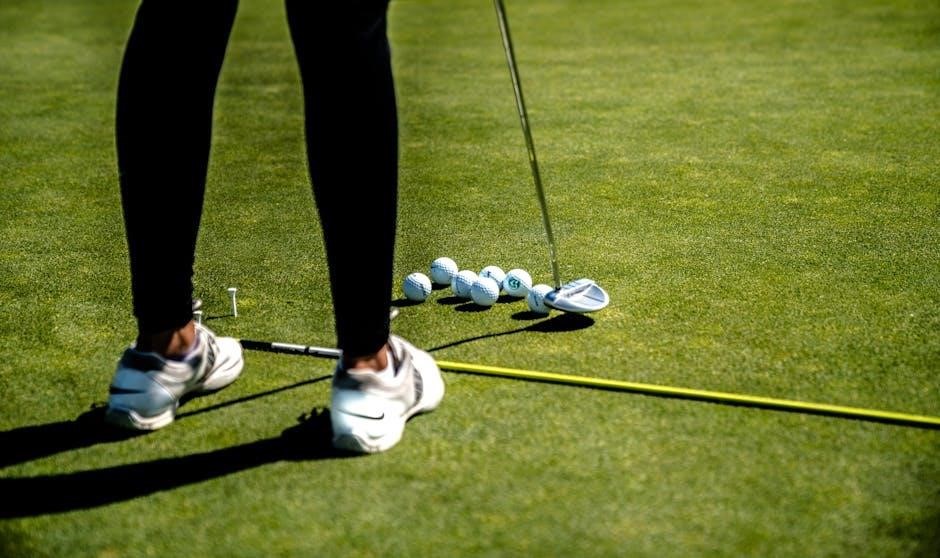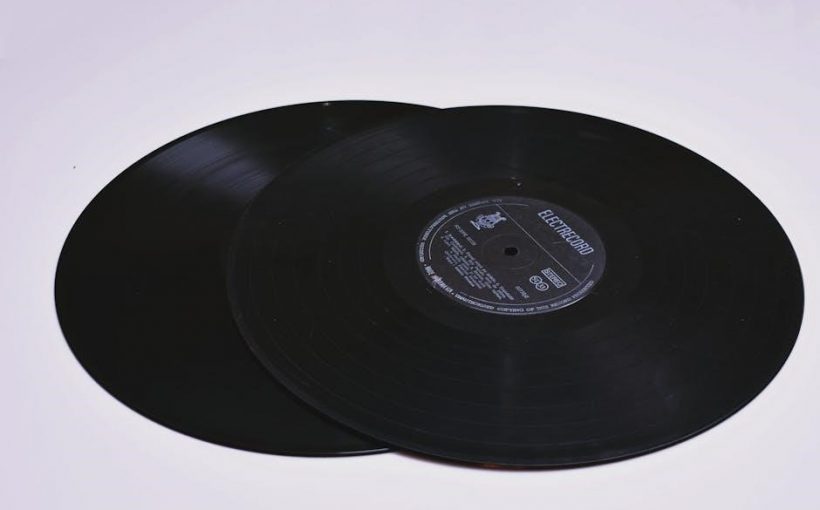Disc golf is a growing sport with over 254,700 registered PDGA members worldwide. It combines elements of traditional golf, using flying discs instead of balls and clubs, aiming to complete each hole in the fewest throws. The game emphasizes fair play, safety, and respect for the environment, with rules governing everything from basic throws to penalties and course etiquette. Understanding these rules is essential for players to enjoy the game and compete fairly.
1.1 Overview of Disc Golf
Disc golf is a recreational and competitive outdoor sport that combines elements of traditional golf with the use of flying discs. Played on natural courses, often in wooded or open areas, the objective is to throw a disc from a tee pad to a target, typically a metal basket, in the fewest throws possible. Each hole consists of a teeing area, fairway, and target, with the number of holes varying from 9 to 18 or more. The sport emphasizes precision, strategy, and physical skill, making it accessible to players of all ages and skill levels. The Professional Disc Golf Association (PDGA) oversees official rules and promotes the sport globally, with over 254,700 registered members as of 2025.
1.2 Importance of Rules in Disc Golf
Rules are essential for ensuring fair play, safety, and consistency in disc golf. They provide a clear framework for players to follow, promoting sportsmanship and respect for the game. Without rules, the sport would lack structure, leading to confusion and potential conflicts. Rules also protect the natural environment by guiding players on how to interact with the course and its obstacles. By adhering to rules, players can enjoy a balanced and challenging experience, whether playing recreationally or competitively. Understanding and following the rules is crucial for maintaining the integrity of the game and fostering a positive community among disc golfers.
Official Rules of Disc Golf
The official rules, governed by the PDGA, ensure consistent play and fair competition. They outline game structure, penalties, and etiquette, fostering a balanced and enjoyable experience.
2.1 PDGA Rules and Guidelines
The Professional Disc Golf Association (PDGA) establishes the official rules for disc golf worldwide. These guidelines ensure fair play, safety, and consistency across all courses. Key aspects include definitions of legal throws, penalties for out-of-bounds or lost discs, and procedures for obtaining relief without penalty. The rules are regularly updated, such as the 2025 revisions, to adapt to the sport’s growth and address common issues. Players must adhere to these rules during competitions, and local courses may adopt them with minor modifications. The PDGA Competition Manual complements these rules, providing detailed procedures for event organization and dispute resolution.
2.2 Course Setup and Layout
A disc golf course typically consists of 9 or 18 holes, each featuring a tee area, a target (often a basket or pole), and a defined fairway. The layout varies widely, incorporating natural obstacles like trees, hills, and water hazards to challenge players. Courses may include mandatories (required paths) and out-of-bounds areas to add complexity. Safety and environmental preservation are key considerations in course design. Each hole’s par rating reflects its difficulty, and the overall course setup ensures a balanced mix of short and long throws. Players must navigate the terrain strategically, adhering to rules that protect both the environment and other players. Proper course setup enhances the game’s enjoyment and fairness for all participants.
2.3 Objective of the Game
The objective of disc golf is to complete each hole with the fewest throws possible by landing the disc in a target, typically a basket. Players take turns throwing from the tee area, aiming for accuracy and control. Each throw counts as a stroke, and penalties may add additional strokes for rule violations. The player with the lowest total strokes at the end of the round wins. The game emphasizes precision, strategy, and adherence to rules to ensure fair competition. Understanding the objective helps players focus on improving their skills and enjoying the sport responsibly.
Gameplay Basics
Disc golf involves throwing a disc toward a target, counting each throw as a stroke. Players aim to complete each hole in the fewest throws, emphasizing fair play;
3.1 Starting Play
Starting play in disc golf involves determining the order of players on the first tee. Typically, players draw lots or agree among themselves who goes first; The first player tees off by throwing their disc from the designated tee area. Subsequent players follow in the established order, each throwing from the same tee area. Once all players have teed off, the next player to throw is the one whose disc landed farthest from the target. This process continues until all players have completed the hole. Proper starting procedures ensure a smooth and organized game for all participants. Safety and sportsmanship are prioritized at all times during play.
3.2 Scoring and Strokes
Scoring in disc golf is based on the number of strokes taken to complete each hole. A stroke is counted each time a player throws the disc. The objective is to achieve the lowest total strokes across all holes. Players must count every throw, including penalty strokes, which are incurred for rule violations. The player with the fewest total strokes at the end of the round wins. Proper scorekeeping is essential to ensure fair play. All throws, including those resulting in penalties, contribute to the overall score. Accurate tracking of strokes helps maintain the integrity of the game and ensures a competitive, enjoyable experience for all participants.
3.3 Completing a Hole
A hole is considered completed when the disc lands and remains in the basket or chain apparatus. Players must ensure the disc is fully within the basket to count as completed. If the disc is on top of the basket or touching it without being fully inside, the hole is not completed. Once the disc is holed, the player has completed the hole, and no further strokes are counted for that hole. Players must hole out before moving to the next hole. The process ensures clarity in scoring and maintains the flow of play. Completing each hole correctly is essential for fair competition and adherence to the rules.

Throws and Types of Throws
Disc golf involves various throwing techniques, including backhand, sidearm, overhand, and thumber. Players can choose any method, as no restrictions apply to throwing styles during play.
4.1 Basic Throwing Techniques
Mastering basic throwing techniques is essential for disc golf. The most common throws include backhand, sidearm, and overhand. The backhand involves gripping the disc with the thumb on top and fingers on the rim, snapping the wrist for power. The sidearm, or forehand, uses a similar grip but with the thumb on the side, generating speed with arm movement. Overhand throws, like the thumber or push putt, are used for shorter distances. Proper stance, balance, and follow-through are crucial for consistency. Players should practice these techniques to develop accuracy and control, adapting their style to suit different course conditions and hole layouts.
4.2 Legal and Illegal Throws
In disc golf, a throw is legal if it adheres to the rules, while illegal throws result in penalties. A legal throw begins with the disc behind the front edge of the tee area, moving toward the target in one continuous motion. Any throw that intentionally deflects or catches the disc in flight is illegal. Players must release the disc before crossing the tee line to avoid a fault. Illegal throws, such as “drop-ins” or deliberate deflections, incur one-stroke penalties. Understanding these distinctions ensures fair play and maintains the integrity of the game, allowing players to compete according to standardized rules and guidelines set by the PDGA.
Penalties and Relief
Penalties in disc golf typically add one stroke for infractions like out-of-bounds throws or lost discs. Players may obtain relief by rethrowing or moving to a safe position without penalty.
5.1 Common Penalties in Disc Golf
In disc golf, common penalties include one-stroke penalties for out-of-bounds throws, lost discs, or rule infractions. If a disc lands out of bounds, the player must replay from the previous position or a designated drop zone. Lost discs result in a penalty stroke and a throw from the last known position. Intentional deflections or interference with a disc in flight also incur penalties. Safety violations, such as throwing when others are in danger, may lead to penalties or disqualification. Players must adhere to these rules to maintain fair play and sportsmanship. Understanding these penalties is crucial for competitive and casual players alike.
5.2 Obtaining Relief Without Penalty
Relief without penalty is allowed in specific situations, such as when a disc comes to rest near temporary obstacles like advertising signs or permanent structures like benches. Players may take relief by moving their disc to the nearest playable area without altering the environment. If a disc is deflected by an obstacle or spectator, the player may replay the throw without penalty. Additionally, if a disc is lost or out of bounds, players can take relief by throwing from the previous position or a designated drop zone. These rules ensure fair play while maintaining the integrity of the game, allowing players to continue without undue disadvantage. Relief is granted to promote smooth gameplay and sportsmanship.

Etiquette and Player Responsibilities
Players must ensure safety, respect others, and maintain the course. Avoid distractions, watch for hazards, and never alter natural obstacles. Responsible behavior ensures enjoyable gameplay for everyone.
6.1 Safety Guidelines
Players must prioritize safety to prevent injuries and ensure a enjoyable experience for everyone. Always check surroundings before throwing and yield to others when necessary. Be cautious of potential hazards like uneven terrain or wildlife. Never throw if someone is in the line of fire, and ensure the area is clear of bystanders. Properly handle discs to avoid accidental throws or slips. Awareness and responsible behavior are key to maintaining a safe environment for all players and spectators. Adhering to these guidelines helps protect everyone involved and promotes a positive disc golf community.
6.2 Respect for the Course and Others
Respecting the course and fellow players is essential in disc golf. Players must avoid damaging vegetation, natural obstacles, or course equipment. Littering is strictly prohibited, and all trash should be disposed of properly. Respect other players by yielding when necessary, minimizing noise, and avoiding distractions during their throws. Spectators should stay behind players and not interfere with gameplay. Always adhere to local course rules and regulations, as they are designed to protect the environment and ensure a positive experience for everyone. Maintaining a clean and respectful course fosters a welcoming community and promotes the sport’s growth.

Local Course Rules and Variations
Local course rules vary by location and may include specific regulations for out-of-bounds areas, mandatories, or unique penalties. These rules are designed to accommodate the course’s environment and are typically posted on-site or in course materials. Players must familiarize themselves with these variations before play, as they supersede general rules in specific situations. Understanding local rules ensures fair play and enhances the overall disc golf experience.
7.1 Understanding Local Regulations
Local regulations in disc golf are specific rules set by course managers or authorities to adapt the game to the unique conditions of each course. These rules can include designated out-of-bounds areas, protected environmental zones, or specific instructions for navigating obstacles. Players are expected to familiarize themselves with these regulations before starting their round, as they often differ from one course to another. Local rules are usually posted near the first tee or included in course maps, ensuring that all players are aware of the unique guidelines. Adhering to these rules is crucial for maintaining fair play and preserving the course environment.
7.2 Special Course Rules
Special course rules are additional guidelines implemented by course managers to address unique challenges or features specific to a disc golf course. These rules may include mandatory paths (mandos), island holes, or elevated baskets. Some courses may designate certain areas as “drop zones” for relief or specify alternate tees for different skill levels. Players must adhere to these rules to ensure fair play and maintain the integrity of the course. Special rules are often posted on signs or course maps, and it’s essential to review them before starting a round to avoid penalties and misunderstandings. These rules enhance the gameplay experience by adding variety and strategy to the course layout.

PDGA Competition Manual
The PDGA Competition Manual provides detailed guidelines for organizing and managing disc golf events, ensuring consistency and fairness in competitive play. It outlines procedures, rules interpretations, and best practices for tournament directors, covering topics like player conduct, course setup, and scoring protocols. Updated annually, the manual reflects the latest rules and standards, serving as a critical resource for event organizers and competitors alike. It is used in conjunction with the Official Rules of Disc Golf to maintain uniformity across all PDGA-sanctioned events.
8.1 Overview of the Competition Manual
The PDGA Competition Manual is a comprehensive guide for organizing and managing disc golf events, ensuring consistency and fairness in competitive play. Updated annually, it reflects the latest rules and standards, providing detailed procedures for tournament directors. The manual covers topics such as course setup, player conduct, scoring protocols, and penalty enforcement. It also outlines best practices for handling unique situations and ensuring player safety. Available online, the manual serves as an essential resource for event organizers, competitors, and officials. By adhering to its guidelines, events maintain uniformity and alignment with PDGA standards, fostering a fair and enjoyable experience for all participants.
8.2 Key Updates for 2025
The 2025 PDGA Competition Manual introduces several key updates to enhance fair play and clarity. Rule 803.02(A) now allows players to obtain relief without penalty from certain temporary obstacles, such as advertising assets or sign posts, aligning with modern course setups. Additionally, the definition of mandatories has been refined to ensure consistent enforcement across events. The two-meter rule for out-of-bounds calls has been clarified, reducing ambiguity. These updates aim to improve player safety, streamline gameplay, and maintain the integrity of the sport. Players and event organizers are encouraged to review the revised manual, effective January 1, 2025, to ensure compliance with the latest guidelines.

Advanced Rules and Scenarios
Advanced scenarios include navigating mandatories, handling out-of-bounds discs, and addressing lost discs, ensuring players adhere to specific rules for each situation to maintain fair play.
9.1 Mandatories (Mando) and Obstacles
Mandatory routes, or “mandos,” require discs to pass through or around specific obstacles, ensuring a challenging and fair path for all players. Obstacles like trees, rocks, or signs are integral to the course and must not be altered. A disc thrown around a mando but failing to complete the required path incurs a penalty. If a disc lands in a guarded area, players may take relief without penalty, provided they follow PDGA guidelines. These rules enhance the game’s strategic depth, testing players’ accuracy and adherence to course-specific regulations.
9.2 Out of Bounds and Lost Discs
A disc is considered out of bounds if it lands beyond the course’s designated boundaries or in areas marked as such. Players incur a one-stroke penalty and must play from the previous position or a designated drop zone. A lost disc, hidden from view in dense foliage or water, results in a one-stroke penalty and a drop behind the point of entry. If a disc is found within three minutes, play resumes from its location. These rules ensure fair play and maintain the game’s flow, emphasizing accountability and adherence to course boundaries while minimizing delays caused by lost discs.
Safety and Sportsmanship
Safety is paramount; players must ensure their throws don’t endanger others. Sportsmanship involves respecting fellow players, the course, and the environment. These principles foster a positive disc golf community.
10.1 Ensuring Player Safety
Player safety is a top priority in disc golf. Before throwing, ensure the area is clear of other players, spectators, and animals. Always yield to others on the course. Be aware of your surroundings, including potential hazards like uneven terrain or wildlife. After releasing the disc, watch its flight path carefully. If a disc lands near others, alert them to avoid accidents. Never throw if there’s a risk of distracting or endangering someone. Respect safety guidelines and local rules, such as avoiding throws near sensitive areas or water hazards. Proper safety practices ensure an enjoyable experience for all players and maintain the integrity of the game.
10.2 Promoting Sportsmanship
Sportsmanship is essential in disc golf, fostering a positive and respectful environment for all players. Always show courtesy to fellow players, allowing faster groups to play through and maintaining a steady pace. Congratulate others on their shots and avoid disruptive behavior. Respect the course by picking up trash and minimizing environmental impact. Control emotions, refraining from throwing discs in anger or frustration. Follow rules without cheating or disputing calls unfairly. Be honest in scoring and acknowledge mistakes promptly. Apologize if actions affect others negatively. By upholding these principles, players contribute to a welcoming and enjoyable experience for everyone involved in the game.
Disc golf rules ensure fair play and safety, promoting sportsmanship and environmental respect. Familiarize yourself with the PDGA guidelines for a enjoyable and competitive experience. Visit pdga.com for detailed resources and updates.
11.1 Summary of Disc Golf Rules
Disc golf rules are designed to ensure fair play, safety, and sportsmanship. The objective is to complete each hole with the fewest throws. Players must count each throw and penalties, such as out-of-bounds or lost discs. Courses feature unique layouts, and rules like mandatories and obstacles add challenge. Etiquette emphasizes respect for others and the environment. The PDGA provides official guidelines, including updates for 2025, to govern both casual and competitive play. Understanding these rules enhances the game experience and promotes enjoyment for all players. Visit pdga.com for detailed resources and updates on disc golf rules.
11.2 Resources for Further Learning
For deeper understanding, the PDGA Official Rules of Disc Golf and Competition Manual are essential resources. Available online, these documents provide detailed guidelines and updates, such as the 2025 revisions. Players can also explore local disc golf courses, which often post specific rules and variations. Online forums and communities, like those on pdga.com, offer discussions and insights from experienced players. Additionally, instructional videos and tutorials on platforms like YouTube can help visualize techniques and rule applications. Staying informed ensures players can navigate the game confidently, whether casually or competitively.
